By Victor Caneva
Situated under the stately peak of Monte Coglians, the highest mountain in Friuli Venezia Giulia, lies a true gem of Carnia. Slightly more than a two-hour drive from Trieste, the Staipo da Canobio serves up delicious Carnian specialities from locally sourced ingredients in an unbelievably sublime location.
Resting between the picturesque village of Collina di Forni Avoltri and the Rifugio Tolazzi, where impressive networks of trails spread out to various points of interest in the Carnic Alps above, the Staipo is an exceptional place to fuel up for an afternoon hike or to celebrate the end of a successful excursion in the mountains. The Staipo also offers plenty of parking for those who prefer to arrive by car and an outdoor play area for the kids.
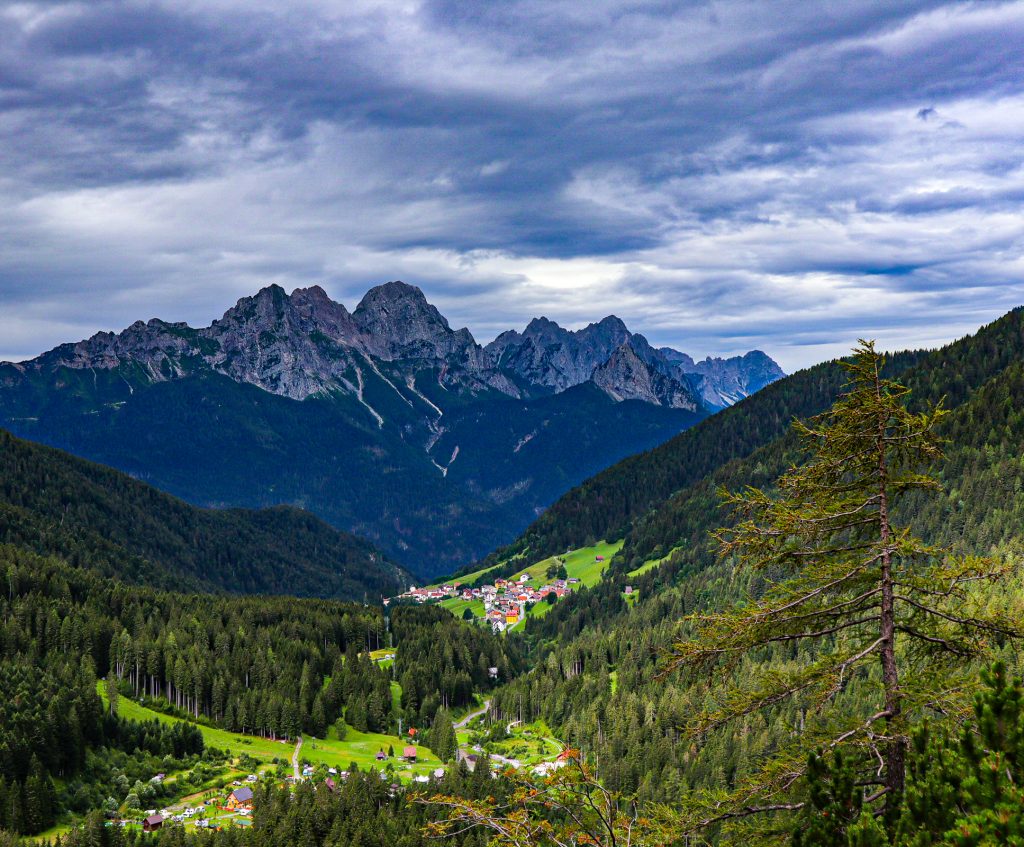
“Staipo” roughly translates to “barn” in Culinot, the local dialect of the Friulian language spoken in Collina. For many years, hay was stored on the site the restaurant now occupies. Cows were grazed here before being led to higher pastures, where they fed on mountain grasses and herbs that give Carnian cheeses their distinct qualities.
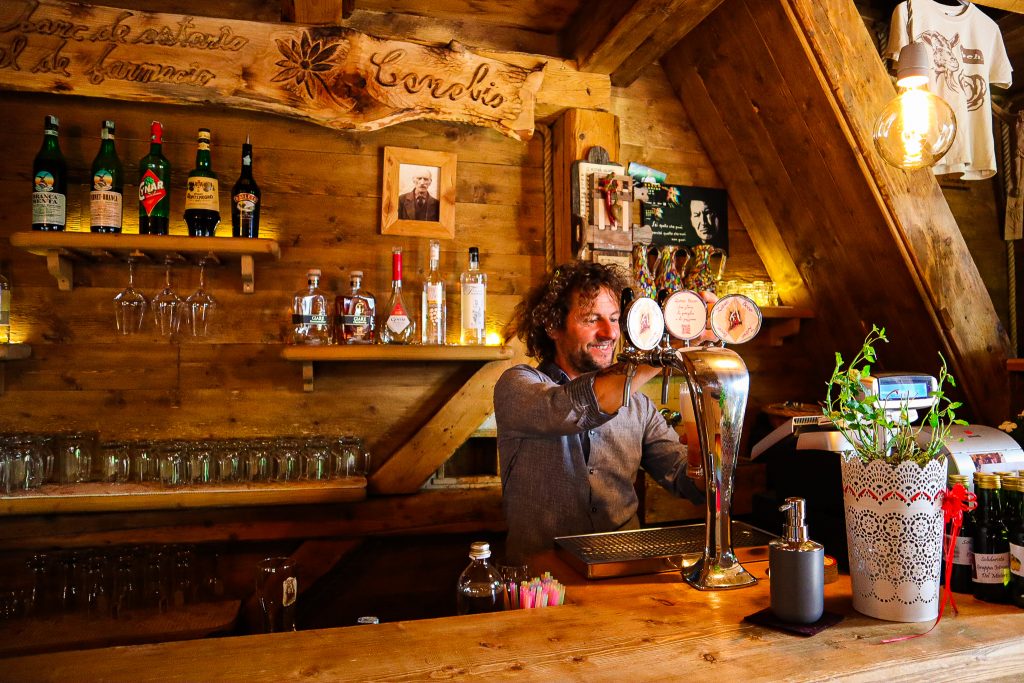
In the early 1970’s, Umberto, the father of the current owner, Gino Caneva, decided to start a rustic eatery on the land and also gave the area its current name of “Canobio.” At first, only the “completa,” featuring the Carnian staples of polenta, frico, and salsiccia was served. Gino’s mother, Luisa, was the creator of a storied frico recipe, said to be one of the best in all of Carnia. The Staipo still features the famous frico, made from cheese and potatoes, but its menu has expanded while staying true to its Carnic roots.
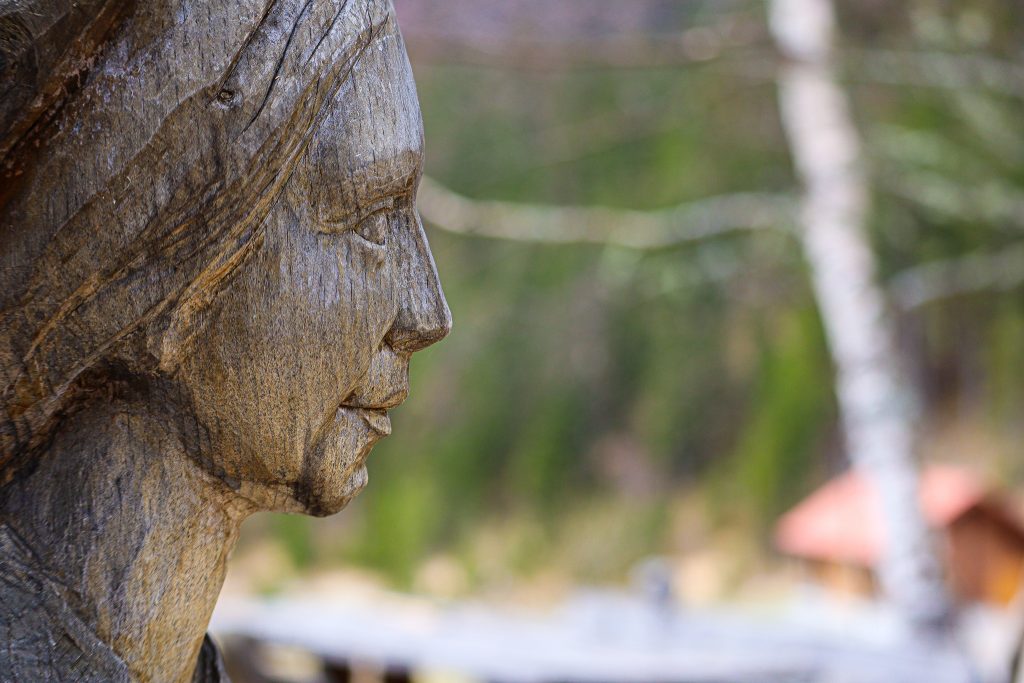
As we stayed in Collina for a week, savoring the cool mountain air as Trieste was experiencing a heatwave, I was able to dine at the Staipo da Canobio three times. Visiting the Staipo was special for me. My parents had visited this general area several years ago, searching for information about my great-grandfather.
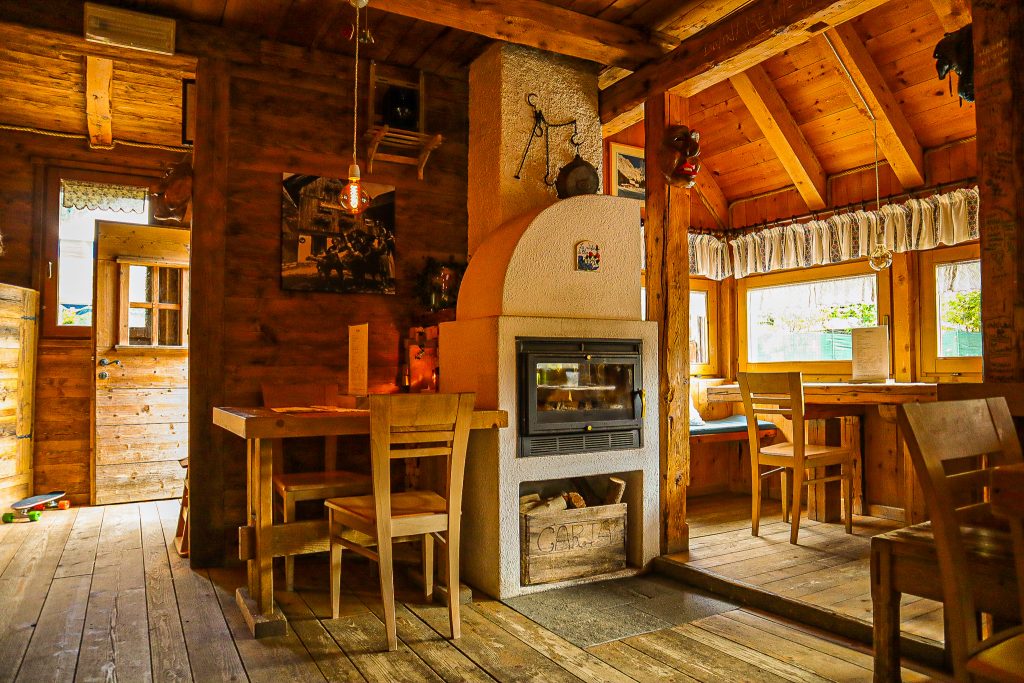
In a divine twist, they met Gino’s sister, Ines Caneva, who introduced them to the idyllic town of Collina, where my great-grandfather was born and lived before immigrating to America. Ines graciously took my parents on a tour of the village and introduced them to the local historian, who confirmed the house that my great-grandfather was born in. Funnily enough, the Staipo’s chef and current steward of the legendary frico recipe, Emiliana Caneva, lives in the same house!
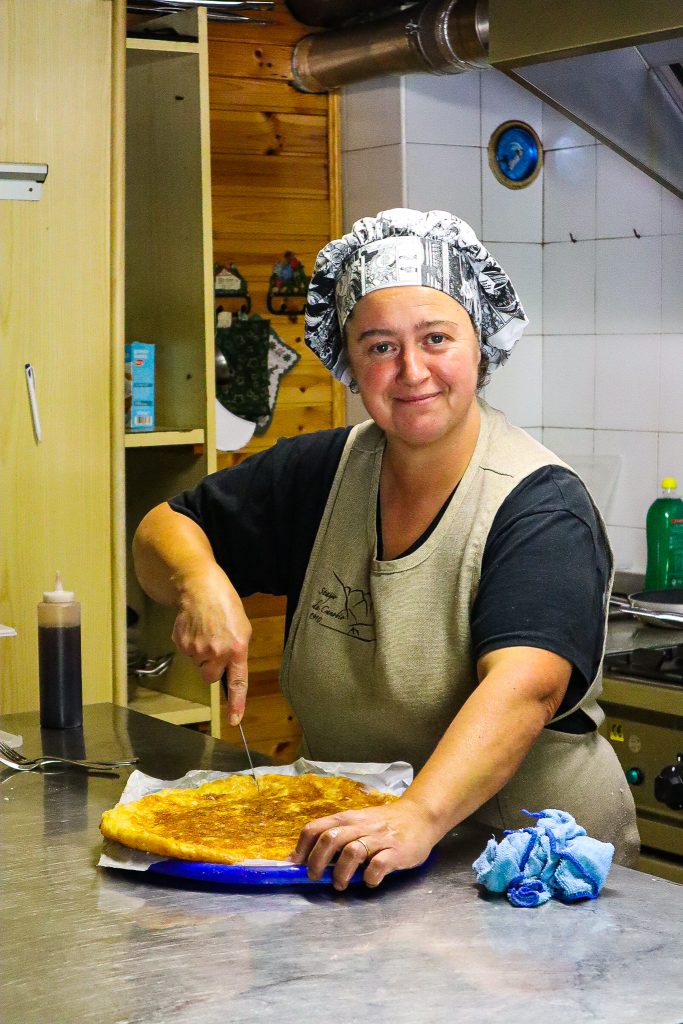
On my first visit to the Staipo, after a soggy walk from Collina, we sat inside one of the two dining areas. The warm wooden interior was inviting, beckoning us inside out of the rain. I went with the classic polenta, frico, and salsiccia coupled with an artisanal draft beer from the Zahre Brewery in nearby Sauris. The texture of the frico was perfect, with plenty of gooey, cheesy, goodness contained between the firmer, pan-roasted top and bottom of the slice.
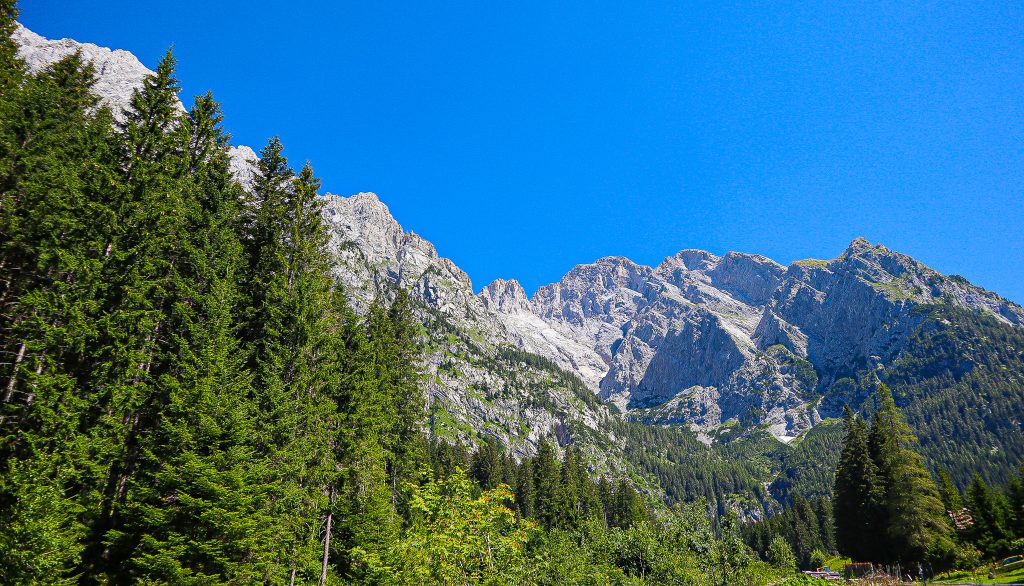
Polenta has never made me wax poetic, but it was well flavored, not overly dry, and did a great job of balancing the richness of the frico and sausage. Less fatty than some other sausages, the grilled salsiccia was flavorful, hearty, and just salty enough. Beer was a perfect compliment to this “stick to your ribs” (as we say in the US) dish, and the Zahre Red Lager washed down the meal with a smooth blend of malt and hops.
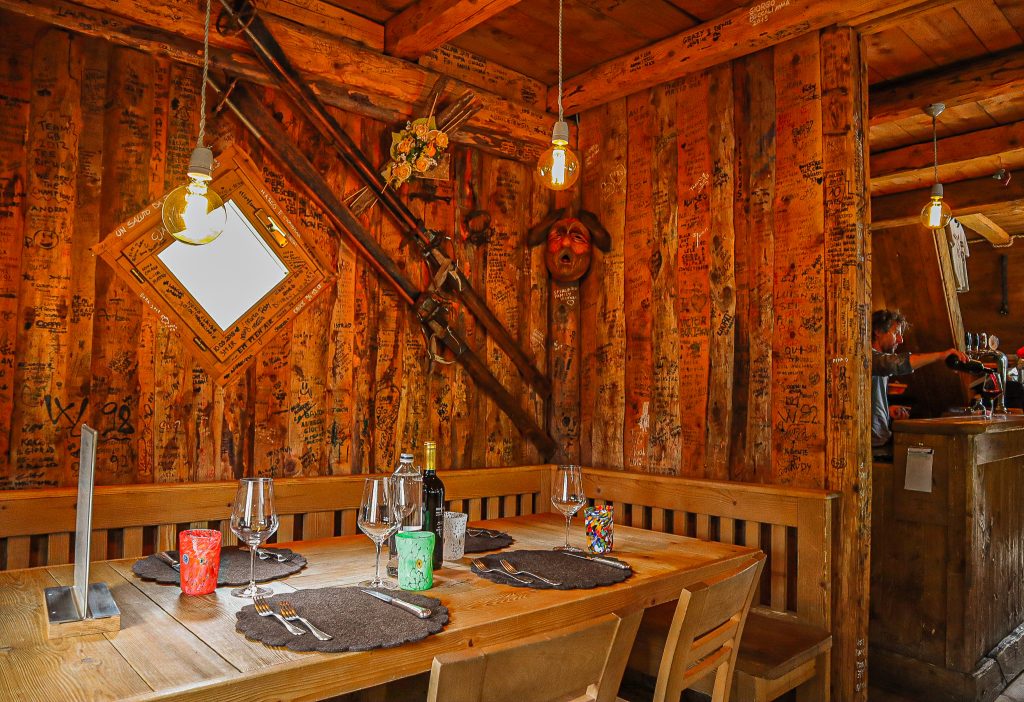
Collina’s unique cabbage is famous, with the village hosting the Festa dei Cavoli Nostri in October, and the Staipo has crafted exceptional contorni (side dishes) with this ingredient that some may consider less than sexy. The “Crauti di Collina” is a completely different kind of crauti (sauerkraut) than we find in Trieste. It is creamier, less acidic, and cooked with pancetta to give it a much more savory flavor than any crauti I have ever tasted.
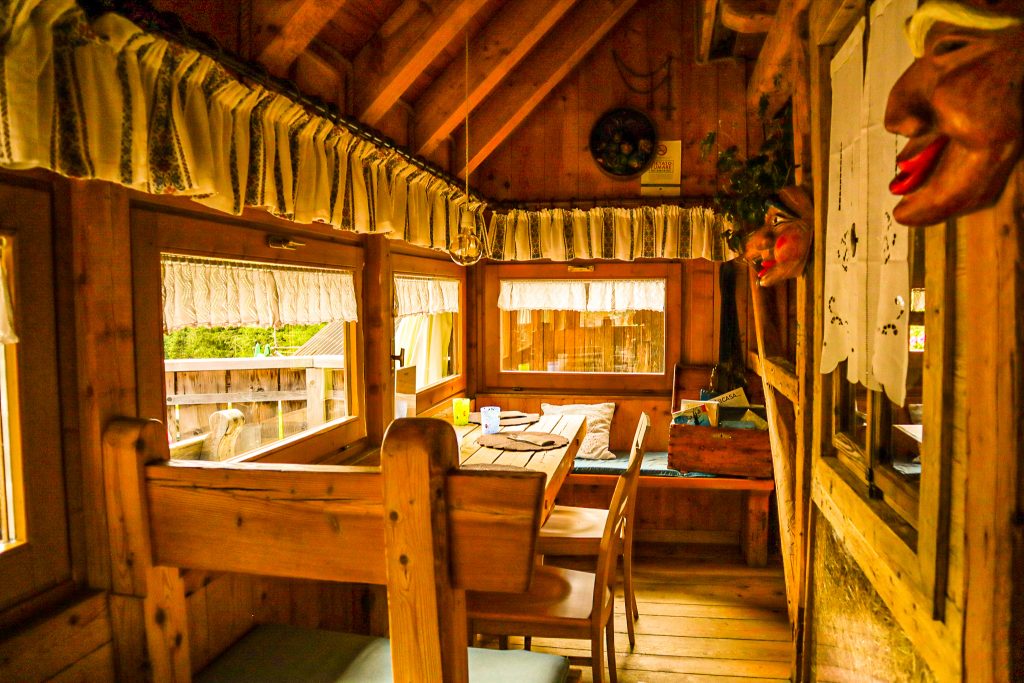
Imagine a jota with no beans and you’re getting close. Another cabbage-centric dish served at the Staipo is “Cjaput con las Fricos” (Unfortunately, I wasn’t able to figure out how to write the name of this dish with the strange accent marks and little dangly thing under the “c” that Culinot requires). This specialty features fresh shredded cabbage lightly dressed with vinegar and topped with indulgent fried pancetta. Crunchy and surprisingly sweet, the cabbage is brought together with the smokey pancetta in delicious harmony by the dressing.
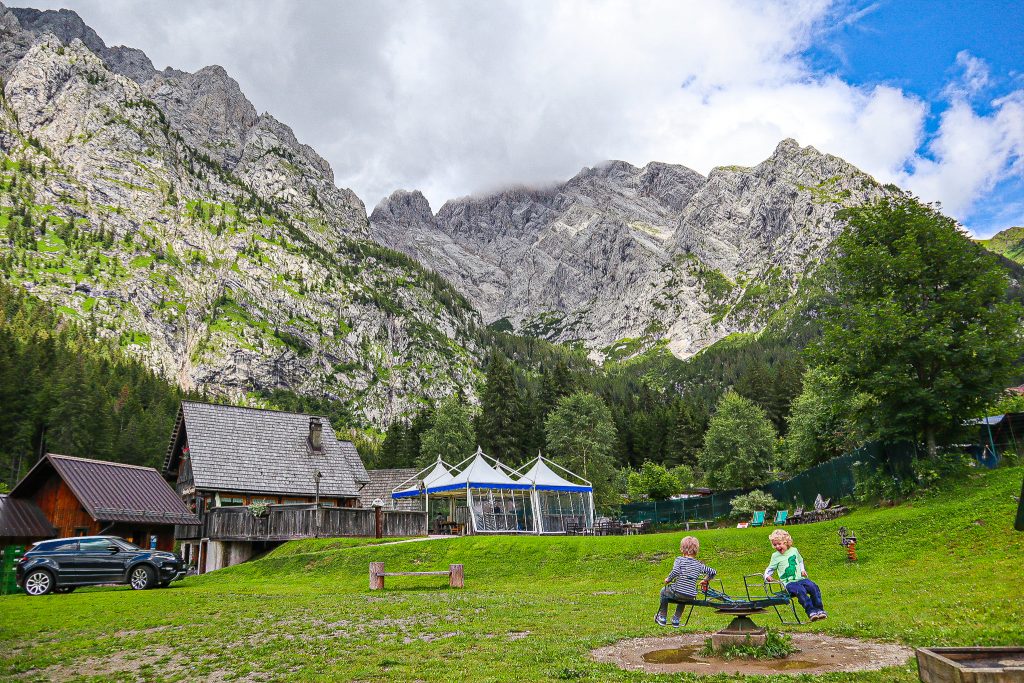
On our second visit to the Staipo, we went for some early-afternoon antipasti on a day with much nicer weather and dined in the ample outdoor seating area. We still have to be extra careful during these strange Covidy times and we were pleased to see hand sanitizer available at the entrance to the restaurant and the restrooms. The waitstaff also wore masks, even with the fresh breeze blowing outside. In addition to covered al fresco seating with an unreal view of Monte Coglians, chairs are spread out on the back lawn of the property for customers who prefer to soak up some sun while they enjoy a beverage.
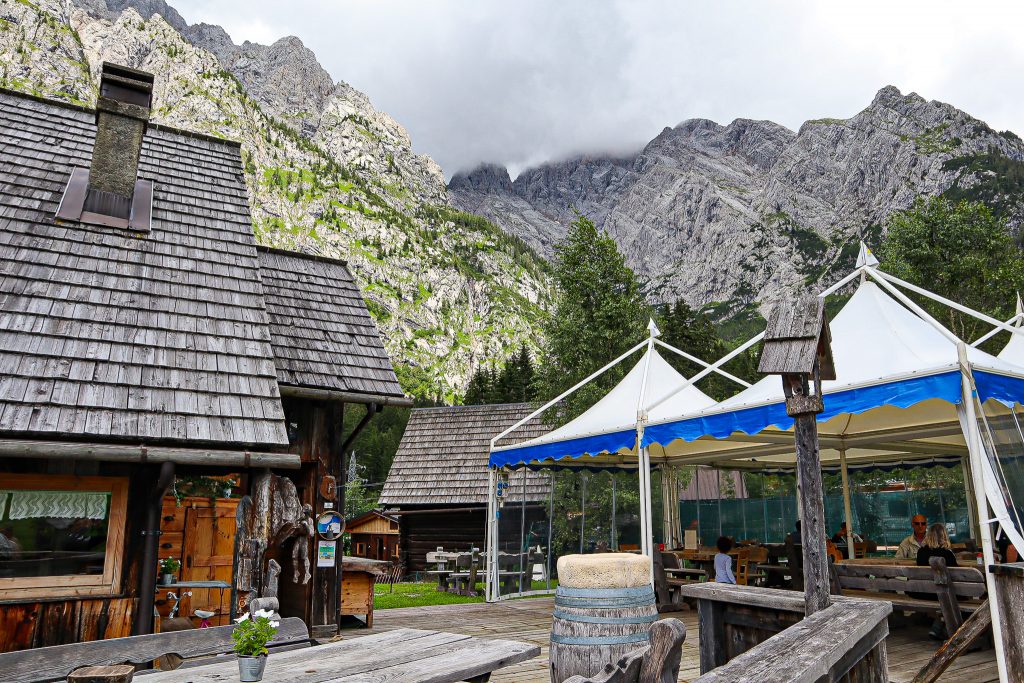
As the adults chatted and the kids burned off some energy on the playground, we eagerly dove into the affettati e formaggi misti (mixed cold meats and cheeses) and some red wine from a more southerly area of Friuli. While Gino described the local salumi and formaggi on offer that day, it was obvious he takes great pride in the products he chooses to serve his customers. Laid across the table was delicate speck, luscious pancetta, and the famous prosciutto cotto from the nearby lakeside town of Sauris. This unique prosciutto has a deeper, more buttery flavor than other cooked prosciuttos I’ve tasted in Italy. Also featured was an excellent salame from Ovaro, made from 50% pork and 50% venison. As far as the cheeses were concerned, there was a creamy fresh montasio, a sharper aged montasio, and one of the best gorgonzolas I’ve ever eaten.
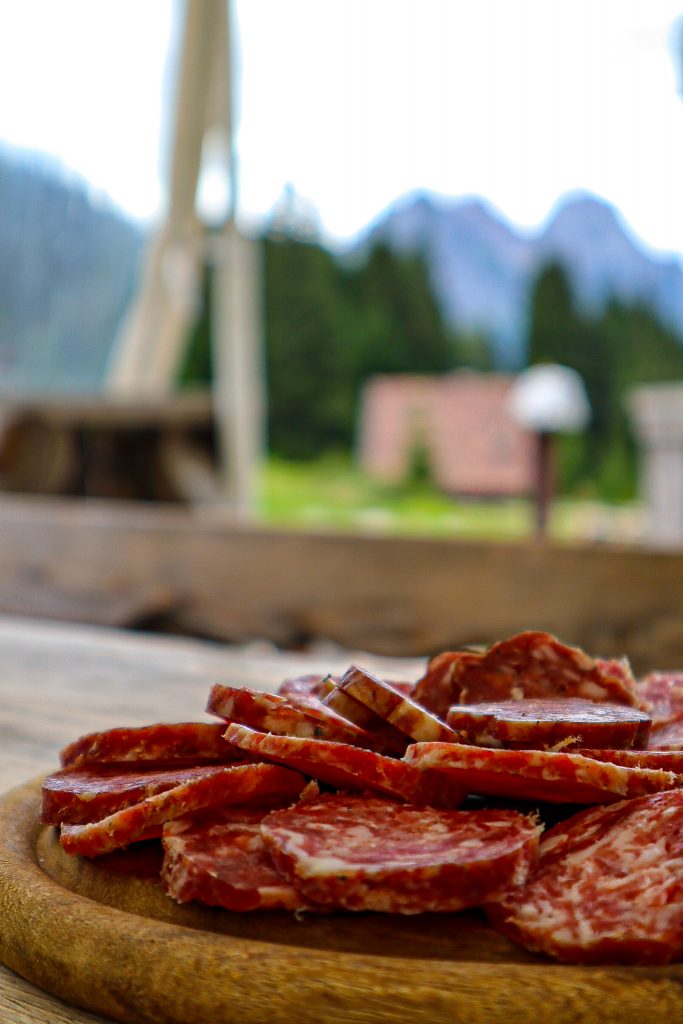
Between dutifully tending to his customers, Gino shared a little of his vision for the future of the Staipo da Canobio, the Villaggio Staipine. He plans on building small, attractive cabins on the grounds, offering quality short-term lodging for visitors to this Alpine paradise. Hikers, adventurers, and tourists looking for an alternative to the traditional hotel or albergo experience will be able to immerse themselves in this natural wonderland without having to sacrifice the amenity of an exceptional place to dine.

Several days later, a refreshing breeze flowed down the mountains as I enjoyed my third and final meal at the Staipo. Once again seated outside, I could not have asked for better weather in August. This time I opted for the pasticcio of the day (which happened to be mushroom and smoked ricotta), to try something a little more common in other parts of Italy. The smoked ricotta in Carnia is truly exceptional and was a perfect compliment to the savory fungi. Some other pasticcios I’ve had have been overly rich and have hit my stomach with a heavy thud, but this dish was fresh and light while still feeling decadent.

As I talked to Ines about the history of the Staipo and Collina while sipping a crisp Friulano wine produced near Cividale del Friuli, I reflected on what an amazing experience it was to share a meal in such a poignant setting. My great-grandfather had doubtlessly passed by this very spot many times as he transported contraband to Austria as an adolescent.
Now, in a very different world, I was having a great lunch prepared by distant relatives in the same majestic little corner of Italy he left long ago. I hope to return to the Staipo da Canobio often and to share many more unforgettable meals with wonderful people in the impressive shadow of Monte Coglians.






























Your descriptions made me want to pack a bag and go!! What a wonderful place with so much history for your family.
Thanks Ellen! If you do you won’t regret it!
Welcome to Collina !
Biel lavur!
In the hope to meet you soon…
Very nice article. I’m ready for a visit as soon as Italy is reopened.